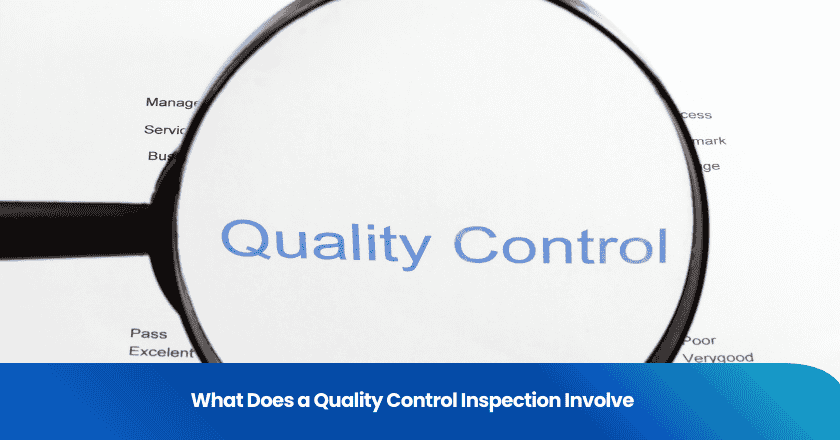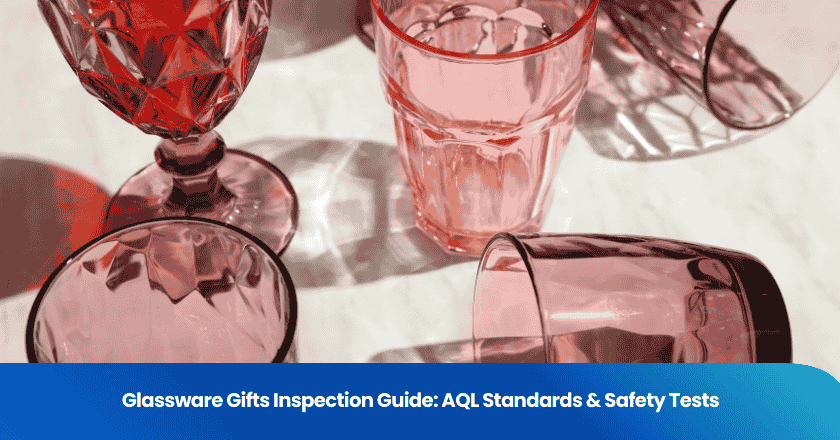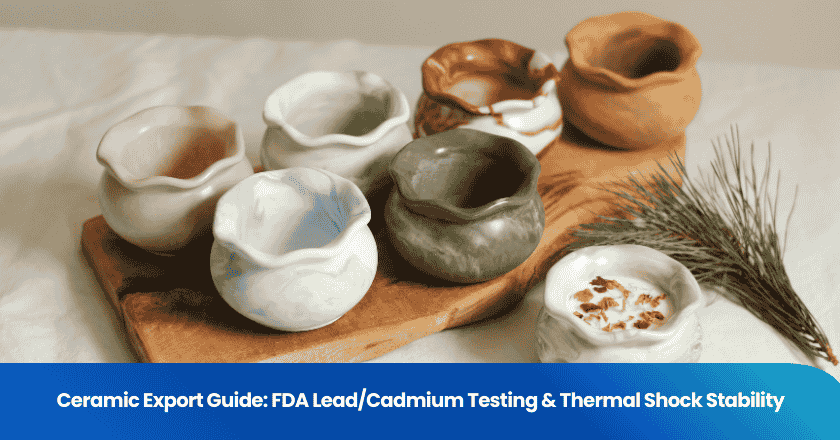
When you ask what is a quality control inspection, you look for a clear process that ensures products or services meet specific standards. You examine, test, measure, and evaluate items to confirm quality control at every stage. These steps help you prevent defects before products reach customers. Quality control focuses on accuracy and reliability. By understanding what is a quality control inspection, you gain the tools to maintain consistent results and reinforce customer trust.
Key Takeaways
- Quality control inspections check products at every stage to catch defects early and keep customers happy.
- Inspectors use visual checks, measurements, and sampling to ensure products meet clear quality standards.
- Planning, testing, defect identification, and reporting are key steps to maintain consistent quality.
- Following best practices like standard procedures, training, and good documentation improves inspection accuracy.
- Strong quality control saves money, builds customer trust, and helps businesses meet important regulations.
What is a Quality Control Inspection
Definition
When you ask what is a quality control inspection, you look for a process that checks if products or services meet set quality standards. You use this inspection to compare actual results with expected outcomes. You focus on finding any differences that could affect performance or safety. Quality inspection forms a core part of quality control and quality assurance. You rely on it to confirm that every item matches the requirements before it moves forward.
Purpose
You perform a quality control inspection to protect your business and your customers. You want to catch problems early, not after products reach the market. This inspection helps you maintain quality standards and avoid costly recalls. You also use it to support quality assurance efforts. When you follow a strict inspection process, you build trust with your customers. You show them that you care about delivering reliable products. You also meet industry regulations and keep your reputation strong.
Tip: Consistent quality inspection helps you spot trends and prevent recurring issues.
Key Activities
You carry out several key activities during a quality control inspection:
- Visual Examination: You look for visible defects, such as scratches, dents, or color mismatches.
- Measurement and Testing: You use tools to measure dimensions or test performance. You check if items meet quality standards.
- Sampling: You select a group of items from a batch for inspection. This helps you judge the overall quality without checking every single product.
- Documentation: You record your findings. You note any defects and actions taken.
- Evaluation: You compare results to quality standards. You decide if products pass or fail the inspection.
You repeat these activities at different stages of production. You might inspect raw materials, check items during manufacturing, or review finished goods. Each step ensures you maintain quality control and meet customer expectations.
Inspection Steps
Planning
You start the quality control journey with careful planning. You define what standards you expect products to meet. You set clear criteria for the quality inspection process. You decide which tools and methods you will use. As a quality control inspector, you review product specifications and create a checklist. You also schedule when and where each inspection will take place. For example, you might plan to inspect every batch at the end of each shift.
Good planning helps you avoid confusion and ensures a smooth inspection process.
Sampling
You rarely check every single item. Instead, you use sampling to select a representative group from a larger batch. You might choose every tenth product or use random selection. As a quality control inspector, you follow industry standards to make sure your sample size gives accurate results. For example, you might inspect 20 items out of a batch of 1,000. This step saves time and resources while maintaining quality control.
Testing
You perform tests to check if products meet quality standards. You use measurement tools, gauges, or machines to test dimensions, strength, or performance. As a quality control inspector, you follow strict procedures to ensure reliable results. For example, you might use a caliper to measure the thickness of a metal part. You record all test results for future reference.
Defect Identification
You look for defects during the quality inspection. You compare each item to your checklist and standards. You might find scratches, incorrect sizes, or missing parts. As a quality control inspector, you mark defective items and separate them from good ones. You document each defect and note its type and frequency. This step helps you maintain strict quality control and prevent faulty products from reaching customers.
Reporting
You finish the quality inspection by creating a detailed report. You summarize your findings, list defects, and suggest corrective actions. As a quality control inspector, you share this report with managers and production teams. Your report helps improve future processes and supports continuous quality control improvement.
Accurate reporting ensures everyone understands the results and can take action to maintain high standards.
Types of Quality Inspection
You encounter three main types of quality inspection during the production process. Each type plays a unique role in maintaining quality control and ensuring products meet your standards.
Incoming Inspection
You begin quality control with incoming inspection. You check raw materials, components, or parts as soon as they arrive at your facility. You verify that suppliers meet your requirements before you use their products in your process. You might measure dimensions, review certificates, or test samples for defects. This step helps you catch problems early and prevent defective materials from entering your production line.
Tip: Always document your findings during incoming inspection. This record helps you track supplier performance and supports future quality control decisions.
In-Process Inspection
You continue quality control with in-process inspection. You examine products at different stages of manufacturing. You look for defects, measure critical features, and confirm that each step meets your quality standards. You might use checklists or measurement tools to guide your inspection. By catching issues during production, you reduce waste and avoid costly rework.
- Example: You inspect a batch of parts after machining but before assembly. You check for surface finish, size, and alignment.
Final Inspection
You finish your quality control process with final inspection. You evaluate completed products before shipping them to customers. You perform visual checks, functional tests, and measurements to confirm that each item meets your specifications. You separate defective products and document your results. This step ensures only high-quality products reach your customers.
Note: Final inspection acts as your last line of defense in quality control. You protect your reputation and customer satisfaction by ensuring every product meets your standards.
You use these three types of quality inspection to build a strong quality control system. Each step helps you prevent defects and deliver reliable products.
Quality Inspection Methods
You rely on several methods to carry out effective quality control. Each method helps you identify issues and maintain high standards throughout your production process. By using the right approach, you strengthen your quality inspection systems and ensure consistent results.
Visual Checks
You start with visual checks. This method involves looking at products or components to spot obvious defects. You might notice scratches, dents, or color mismatches. Visual checks work best for surface flaws or assembly errors. You use this method at different stages of quality control, from incoming materials to final products. Visual checks are quick and do not require special equipment. You can train your team to recognize common issues and act fast.
Tip: Use good lighting and clear guidelines to improve the accuracy of visual checks.
Measurement Tools
You use measurement tools to verify that products meet precise specifications. Calipers, micrometers, and gauges help you measure dimensions, thickness, or weight. You apply these tools during in-process and final quality control steps. Measurement tools give you objective data, which supports your quality inspection systems. You can compare results to standards and decide if items pass or fail. For example, you might use a gauge to check the diameter of a metal rod.
| Tool | Use Case | Benefit |
|---|---|---|
| Caliper | Measure thickness | High accuracy |
| Gauge | Check diameter/width | Consistent results |
| Scale | Weigh products | Quick verification |
Checklists
You depend on checklists to guide your quality control process. A checklist lists all the criteria you need to inspect. You use it to make sure you do not miss any steps. Checklists help you standardize inspections and train new staff. You can use paper forms or quality inspection software to record your findings. Checklists work well for both simple and complex products. They support your quality inspection systems by making the process repeatable and reliable.
Note: Regularly update your checklists to reflect changes in standards or customer requirements.
By combining these methods, you build a strong foundation for quality control. You catch defects early, reduce waste, and deliver products that meet your customers’ expectations.
Why Quality Control Matters
Preventing Defects
You rely on quality control to stop defects before they reach your customers. This process involves regular checks and inspections at every stage of production. You use quality control to catch mistakes early. You compare products to quality standards and take action when you find issues. This approach leads to error reduction and helps you avoid costly problems later. You also support quality assurance by making sure every product meets your expectations.
Consistent quality control builds a strong foundation for your business. You create a culture where everyone values accuracy and attention to detail.
Cost Savings
You save money when you invest in quality control. Detecting problems early means you spend less on repairs or replacements. You reduce waste and avoid expensive recalls. Quality control helps you use resources wisely. You can focus on improving your process instead of fixing mistakes. Quality assurance works with quality control to keep your costs low and your operations efficient.
- Example: You inspect parts during assembly. You find a faulty batch and remove it. You prevent a larger issue and save on future expenses.
Customer Satisfaction
You want your customers to trust your products. Quality control ensures you deliver consistent results every time. You meet customer expectations by following strict quality assurance procedures. Satisfied customers return and recommend your business to others. You build loyalty by showing you care about quality.
| Benefit | Impact on Customers |
|---|---|
| Fewer defects | Higher satisfaction |
| Reliable performance | Increased trust |
| Consistent quality | Repeat business |
Compliance
You must follow industry regulations and legal requirements. Quality control helps you meet these rules. You document inspections and show proof of compliance. Quality assurance supports your efforts by setting clear guidelines. You avoid penalties and protect your reputation by staying compliant. You also show your commitment to safety and responsibility.
Meeting compliance standards is not just about avoiding fines. You show your customers and partners that you take quality seriously.
Challenges and Best Practices
Common Issues
You may face several challenges during quality control inspections. These issues can affect the accuracy and reliability of your results.
- Inconsistent Standards: You might find that different team members interpret quality standards in different ways. This inconsistency can lead to uneven inspection results.
- Incomplete Documentation: Missing or unclear records make it hard to track defects or identify trends over time.
- Time Constraints: You often work under tight deadlines. Rushed inspections can cause you to overlook defects.
- Lack of Training: New inspectors may not fully understand inspection procedures. This gap can result in missed issues or incorrect reporting.
- Equipment Problems: Faulty or uncalibrated tools can give you inaccurate measurements.
Note: Recognizing these challenges helps you take proactive steps to improve your inspection process.
Effective Strategies
You can address these challenges by adopting proven best practices. These strategies help you maintain high standards and achieve reliable results.
1. Standardize Procedures: Create clear, detailed inspection guidelines. Use checklists to ensure everyone follows the same process.
2. Provide Ongoing Training: Regular training sessions keep your team updated on the latest inspection techniques and standards.
3. Use Reliable Tools: Calibrate your measurement equipment regularly. Replace worn or damaged tools promptly.
4. Document Everything: Keep thorough records of each inspection. Use tables or digital forms to organize your data.
5. Schedule Regular Reviews: Hold meetings to discuss inspection results and share feedback. This practice helps you spot trends and prevent recurring issues.
| Best Practice | Benefit |
|---|---|
| Standardized process | Consistent inspections |
| Training | Fewer mistakes |
| Reliable tools | Accurate measurements |
| Good documentation | Easy tracking |
| Regular reviews | Continuous improvement |
Tip: When you follow these strategies, you build a culture of quality and accountability in your organization.
Quality control inspections play a vital role in delivering reliable products and services. You ensure high standards by following each inspection step and using proven methods. Adopting best practices helps you catch issues early and maintain consistency. When you focus on quality, you build trust with your customers and support long-term business success.
Remember: Strong quality control today leads to fewer problems tomorrow and greater customer loyalty.
FAQ
What does a quality control inspector do?
You examine products, measure dimensions, and test performance. You identify defects and record findings. You ensure every item meets quality standards before it moves forward in production.
How often should you perform quality control inspections?
You should inspect at key stages: when materials arrive, during production, and before shipping. Regular inspections help you catch issues early and maintain consistent quality.
What tools do you use for quality inspections?
You use calipers, gauges, scales, and checklists. These tools help you measure, verify, and document product quality. You select tools based on the product and inspection stage.
Can you improve quality control with training?
You improve quality control by training your team. Training helps everyone understand inspection procedures and standards. Well-trained inspectors catch more defects and maintain higher accuracy.
Why is documentation important in quality control?
You rely on documentation to track defects, monitor trends, and prove compliance. Good records help you improve processes and support continuous quality improvement.
Grow your business with TradeAider Service
Click the button below to directly enter the TradeAider Service System. The simple steps from booking and payment to receiving reports are easy to operate.



